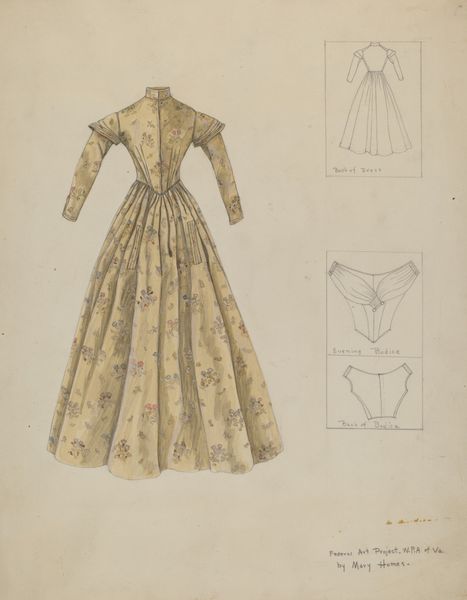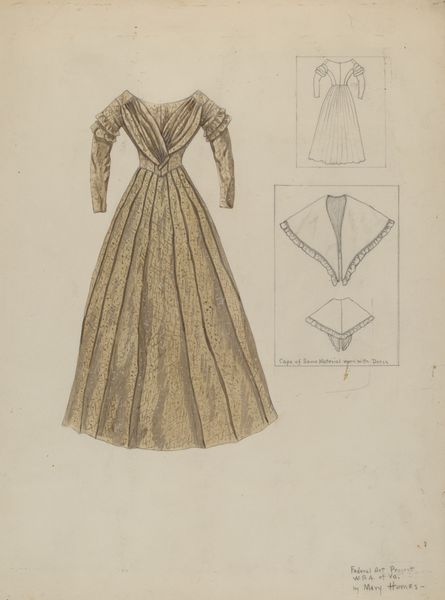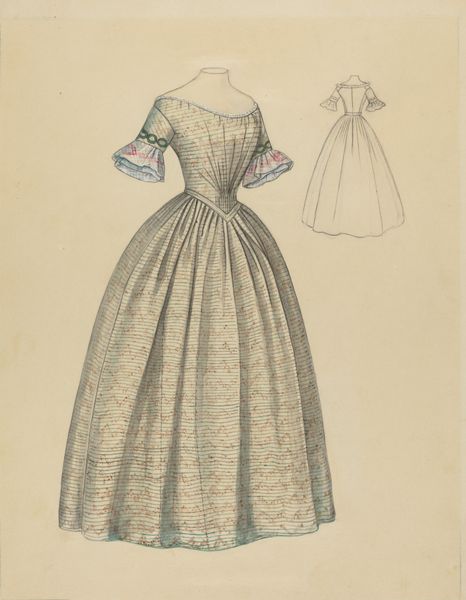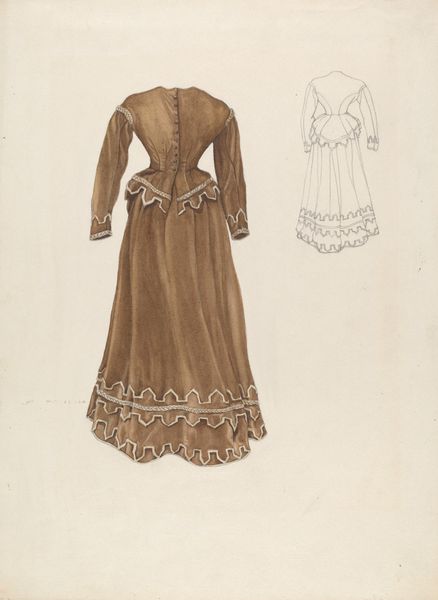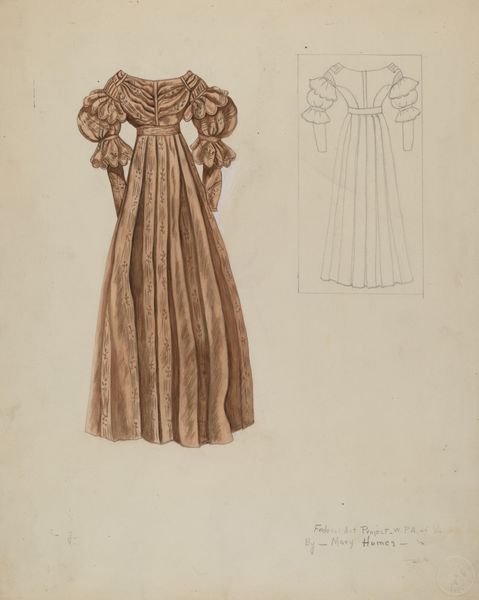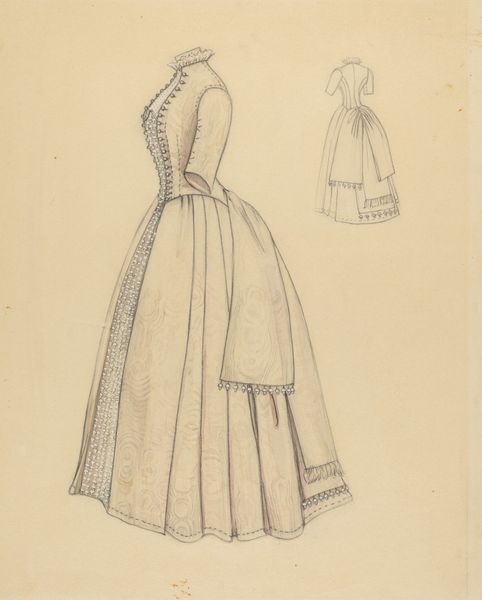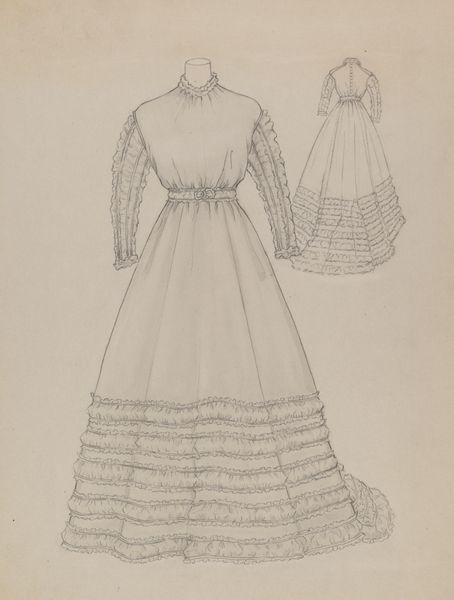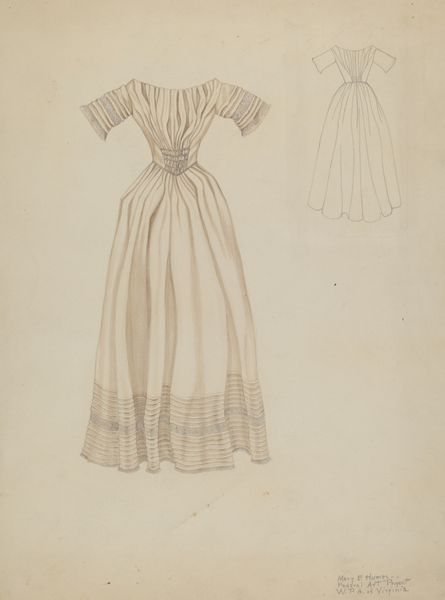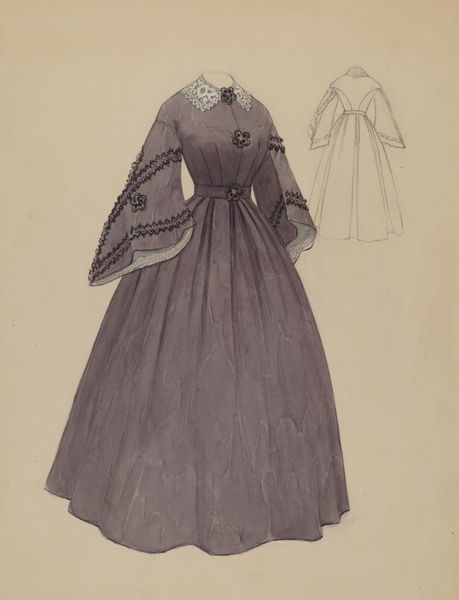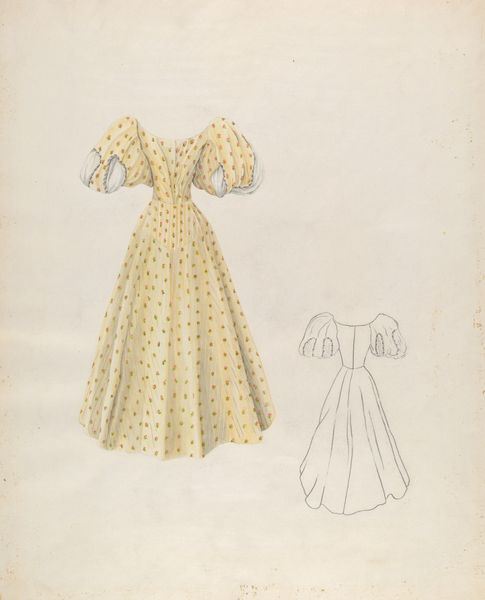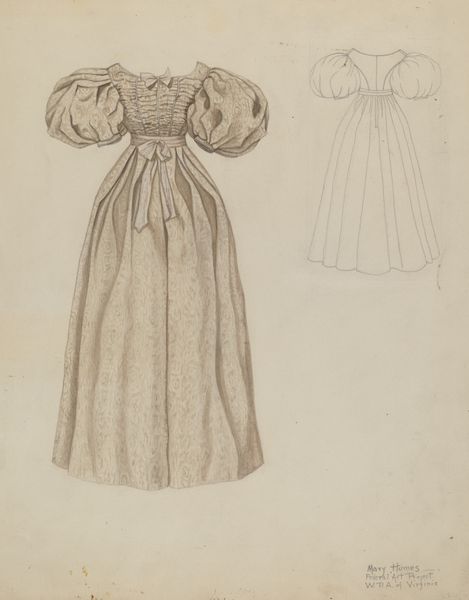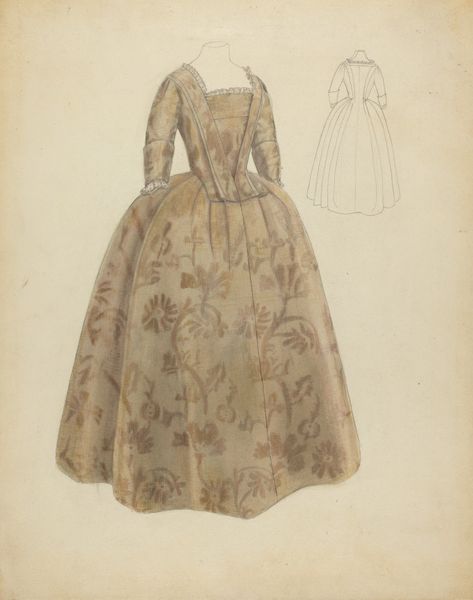
Dimensions: overall: 44.9 x 35.5 cm (17 11/16 x 14 in.)
Copyright: National Gallery of Art: CC0 1.0
Editor: This is Lucien Verbeke's "Dress," dating from around 1937. It appears to be a drawing, perhaps a design sketch. I find the color palette rather muted and subdued. How would you analyze its composition and the visual language being employed? Curator: Well, let's examine the formal elements at play. Note the precise lines, meticulously defining the shape and volume of the garment. The restricted palette, rendered in subtle gradations of tone, guides our attention to the textures and structural details. The use of line emphasizes the division of space in the dress itself. Are you noticing anything in particular about how line dictates our engagement with volume here? Editor: The draping seems suggested by subtle shifts in tone, not bold shading. And the lines appear more descriptive than expressive, prioritizing precision. What is the effect? Curator: Exactly. Observe the delicate balance between line and volume. Verbeke avoids overt emotive gestures, prioritizing instead a meticulous rendering of form and material. This is about capturing the very essence of design. Do you notice the secondary images that give instructions regarding construction? Editor: Yes, I see how these sketches serve to display details more analytically. It all seems so systematic. Curator: Indeed, the effect transcends mere representation; it becomes a study in line, form, and design. We’re not just seeing a dress, but dissecting its very architecture. What have you found most intriguing from our analysis? Editor: Thinking about art beyond emotion, seeing how fundamental elements can speak volumes has shifted my understanding of the creative process. Thank you. Curator: Indeed, recognizing intention is a fascinating experience. It shows how visual composition informs everything we understand about the work.
Comments
No comments
Be the first to comment and join the conversation on the ultimate creative platform.
